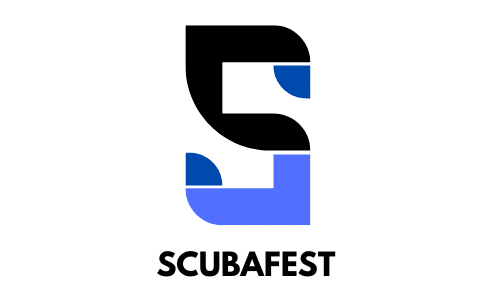Easily create your video storyboard with playplay's features

Creating a clear video storyboard simplifies planning by visually mapping each scene and flow. PlayPlay’s intuitive tools let you drag-and-drop elements, customize templates, and collaborate in real time no design skills needed. This approach saves time, boosts creativity, and ensures your video projects stay organized from concept to final cut. Here’s how PlayPlay transforms storyboarding into an effortless, productive experience.
How to Easily Create a Video Storyboard with PlayPlay’s Features
Creating compelling videos begins with a structured approach, and build your video storyboard step by step is the core mindset that transforms a raw idea into a visual plan. A video storyboard is a sequence of frames or scenes, each representing a stage of your story, used for mapping out concepts before hitting ‘record.’ This process is invaluable: it helps you clarify your message, streamline production, and avoid last-minute chaos during filming.
A lire aussi : How Are Smart Textiles Revolutionizing Health Monitoring in Real-Time?
PlayPlay’s platform introduces digital storyboard tools that remove much of the technical friction. Start by choosing a storyboard template whether you prefer blank canvases or templated layouts, you can organize your project to match your workflow. Each frame supports easy insertion of visuals, script notes, and branding. The drag-and-drop interface allows rapid adjustments to scene sequencing and smooth collaboration among team members. No advanced skills are required; you can duplicate, reorder, or delete scenes intuitively.
What sets PlayPlay’s storyboard features apart is the integrated content customization. Users add scripted text, branded colors, and imagery while leveraging automated motion design, ensuring consistent video pacing and energy. Team workflows benefit from real-time feedback on the storyboard, with version control to manage input. For seamless delivery, preview the entire video, make last tweaks, and export in your preferred format. With these features, PlayPlay’s storyboard tools support both beginners and seasoned creators aiming for clarity and creative control from the outset.
Dans le meme genre : What’s New in the Development of Autonomous Indoor Farming Technologies?
Foundational Steps for Video Storyboarding
Start with the storyboarding basics: clarify your project goals and video concept before sketching a single frame. This fundamental alignment keeps your narrative focused and supports effective frame-by-frame planning. Take time to distill your message and choose a visual approach this upfront clarity saves effort later in the storyboarding process steps.
Break your video outline into core scenes and individual frames. Good scene sequencing tips recommend transforming your script or outline into a logical series of shots. Map the visual continuity in videos by defining the setting, main action, and intended transitions for each scene. Use a storyboard checklist to verify coverage of elements like character positioning tips, timing and pacing in storyboards, and effective shot angles and framing.
Systematic frame-by-frame planning brings each aspect of your project to life. Use a storyboard checklist frequently to confirm you’re meeting storytelling techniques that ensure narrative flow in videos. A robust checklist avoids common storyboarding mistakes and supports efficient storyboard workflows. Don’t hesitate to leverage storyboard templates and digital storyboard tools to streamline your workflow and uphold scene sequencing tips throughout your project.
Using PlayPlay’s Storyboard Tools for Planning and Organization
Digital storyboard tools form the backbone of efficient video planning techniques. With PlayPlay, selecting and customizing storyboard templates is streamlined simply browse the library of options and adapt a template to fit your narrative. The flexibility of these templates supports everything from marketing video storyboards to educational video storyboards, allowing for tailored visual scriptwriting and seamless shot list creation.
The drag-and-drop storyboarding interface stands out for its practicality. Arrange, duplicate, or remove frames with ease, letting you focus on visual continuity and narrative flow. This approach supports storyboard checklist best practices, enabling quick adjustments to timing and pacing in storyboards as ideas evolve. Reordering shots ensures scene sequencing tips are easily implemented, maintaining consistency and shot continuity in videos.
Organizing shots, scenes, and your timeline ensures efficient pre-production workflow management. Storyboard templates enable clear visualization of storyboarding basics, while tools for collaborative storyboarding facilitate feedback integration and team alignment. By combining online storyboard makers with robust annotation functions, PlayPlay’s storyboard software empowers creators to refine visual storytelling and achieve effective frame-by-frame planning from concept to export without unnecessary complexity.
Enhancing Storyboards with Visual and Branding Elements
A precise approach to visual storytelling tips begins by embedding text, visuals, and logos systematically across each frame. This practice secures visual continuity in videos and seamlessly expresses your brand’s identity throughout the entire sequence. Strong visual scriptwriting ensures each message is represented clearly, while text and graphic alignment preserve consistency even as new scenes and context are introduced.
PlayPlay’s automatic motion design and scene transitions empower creators to enhance every frame, simplifying the integration of a shot list creation into the editing flow. These features significantly strengthen visual continuity in videos, so every transition between scenes feels intentional. Plus, leveraging transitions and visual effects helps keep viewers engaged boosting both clarity and narrative momentum.
When setting up your frame-by-frame plan, aligning annotations, shot list creation, and visual scriptwriting to your pre-planned sequences ensures a productive storyboard workflow. This efficiency is especially valuable for creative teams intent on preserving visual continuity in videos. Meticulous brand customization through consistent color palettes, typography, and logo placement cements your message and guarantees all scenes remain distinctly yours.
Employ comprehensive visual storytelling tips by scrutinizing each scene’s composition. Every detail shot list creation, visual scriptwriting, and thoughtful brand customization ensures a cohesive look and helps your video stand out with signature clarity.
Collaboration, Feedback, and Workflow Optimization
Collaborative storyboarding is essential for aligning creative direction across teams. PlayPlay empowers multiple users to participate in real-time, enabling direct input on each segment of the storyboard. By centralizing client storyboard presentations, users avoid versioning confusion and duplicate files, making feedback loops clear and actionable.
Efficient storyboard workflows begin by sharing drafts with stakeholders early and often. During client storyboard presentations, PlayPlay’s interface allows easy annotation and comment threading directly on frames. This streamlines storyboard revision techniques as every suggestion stays contextually tied to the relevant content, ensuring faster decision-making.
Team collaboration is further enhanced through transparent version history. Tracking changes lets teams employ storyboard revision techniques efficiently reverting, comparing, or merging drafts without manual work. The ability to duplicate and reorder scenes using PlayPlay’s drag-and-drop tools makes iterative refinements seamless, which is a crucial aspect of efficient storyboard workflows.
Prioritizing feedback integration ensures client storyboard presentations are actionable and progress logically toward sign-off. For optimal results, follow these tips:
- Share interactive drafts, not static images.
- Summarize key notes for clarity after each review.
- Always confirm final edits with all collaborators involved.
This organized methodology ensures collaborative storyboarding remains a productive and stress-free process for all participants.
Exporting, Iterating, and Moving to Production
Precision in storyboarding workflows starts by selecting the right storyboard export formats such as PDF, video, or animatics for sharing and production handoff. Export storyboard to PDF is especially useful for client storyboard presentations and team reviews, while animatics creation provides a dynamic time-based preview that bridges the gap from static planning to moving imagery. These storyboard export formats support collaborative storyboarding, ensuring everyone works from the latest reference point.
Before production, previewing the storyboard’s sequence is key for narrative flow in videos and maintaining storyboard for narrative control. Teams use video editing pre-planning techniques to refine scene transitions, analyze visual continuity in videos, and evaluate frame-by-frame planning. This step helps anticipate any pacing or timing issues that may disrupt creative direction alignment later.
Transitioning from storyboard to a production-ready edit relies on a robust pre-production workflow. Integrating detailed shot lists, clear storyboard annotations, and refined storyboard scripting tips helps guide the creative team. Efficient storyboard workflows not only save time, but also foster storyboard role in video production by serving as a visual script that keeps all creative and technical efforts synchronized throughout the process.
Storyboarding Fundamentals and Workflow
Storyboard basics hinge on breaking down a video’s narrative into clear visual segments. Each scene is mapped frame-by-frame, using digital storyboard tools to arrange images, action notes, and dialogue. This process helps achieve a logical narrative flow crucial for efficient video planning techniques and for synchronizing script and visuals early in the project.
The storyboarding process steps follow a pattern: define your video concept development, sketch out the sequence using storyboard templates, and detail each shot with visual storytelling tips. Digital storyboard tools simplify these steps, making annotation, scene sequencing tips, and visual continuity in videos accessible for any user level. Their intuitive drag-and-drop interfaces allow seamless adjustment of frames vital for frame-by-frame planning and aligning with creative brainstorming for videos.
Shot list creation is integral to the pre-production workflow. By listing each required shot as you storyboard, you streamline video shoot preparation and ensure that both technical details and storytelling arcs in videos are aligned. This meticulous script and storyboard syncing reduces costly mistakes in later stages and supports storyboard revision techniques.
Storyboard best practices call for collaborative storyboarding, consistent labeling, and using storyboard checklist routines. These steps not only enhance efficient storyboard workflows but also foster client storyboard presentations and real-time creative direction alignment.
